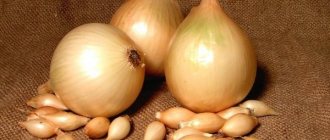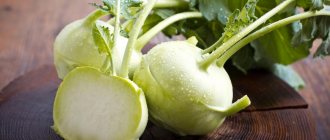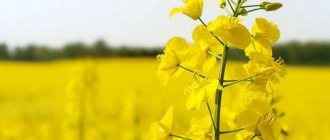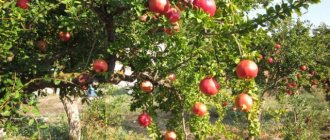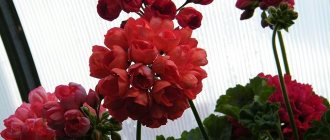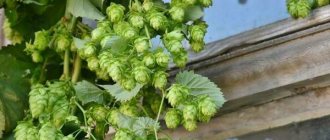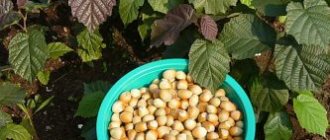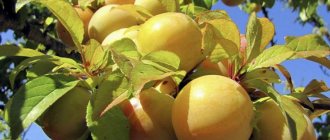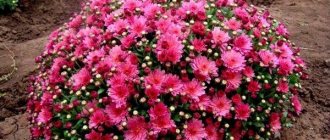Stardust onion is an F1 hybrid, which was bred by Dutch breeders in 1999. It has been grown in Russia for about 20 years and is cultivated in all regions of the country. Belongs to perennial varieties. You can harvest a lot of greens from it in the first year of cultivation, and heads in the second.
Bow Stardust
Stardust onion is easy to care for
Stardust onion is medium hot
Description of the Stardust bow
The Stardust variety is characterized by intensive forcing of the feather part in the first year of planting. To obtain full-fledged bulbs, the sets are planted in the second year. This is an early ripening crop, so the sowing time is in early May.
It is characterized by increased resistance to pests and diseases, is unpretentious in care, loves a lot of light, and does not tolerate very cold climates. It is susceptible to bolting, so it reproduces in different ways.
Appearance
You can recognize the Stardust onion variety by external and other characteristics:
- head shape – round, prism-shaped;
- husk color – white;
- taste – specific onion with sweetness;
- sharpness – medium;
- bulb size – medium (weight from 40 to 60 g);
- green color – rich green;
- feathers have a waxy coating;
- rosette type – erect, lush;
- flesh color - white;
- neck – thickened;
- the fit of the scales is loose;
- the pulp is juicy.
Excellent taste spoils in one case - with insufficient watering during cultivation. Lack of moisture leads to bitterness.
Reproduction
The Stardust variety is intended for propagation by seeds obtained from arrows. However, many farmers and gardeners use bulbs that are planted in the first year to obtain green mass. Therefore, Stardust can be propagated in 2 ways.
Ripening time and yield
Stardust onions fully ripen 58-60 days after planting the seeds. Accordingly, subject to agrotechnical cultivation rules. Thus, having planted onions in early May, the harvest is carried out in early July.
The variety is characterized by high productivity. If the bulbs weigh 40-50 g, then from 1 sq. m can be harvested up to 3-4 kg (when grown on a feather), with a head weight of 50-60 g, the yield per 1 sq. m is 4-6 kg. Onions are varietal, so there is the possibility of increasing the number of bulbs and their weight.
Properties and composition
White onions have a high content of useful substances, therefore they are used in folk medicine as a healing agent.
Compound:
- vitamins – group B (1, 2, 6), C, PP, E, kaempferol;
- organic acids;
- glucose;
- glucinin;
- amino acids;
- flavonoids;
- phytoncides;
- micro- and macroelements - boron, fluorine, copper, phosphorus, manganese, calcium, potassium, iron, sulfur, magnesium, sodium, silicon, rubidium, molybdenum, cobalt, chromium.
Thanks to its rich composition, Stardust onions have a lot of useful properties , which allows the vegetable to be used in the following cases:
- Antibacterial effect - pathogenic microorganisms are destroyed when affected by viruses, bacteria and other infections. These are respiratory diseases, diphtheria, tuberculosis, streptococcal infection, etc.
- Strengthening the immune system, due to which a protective barrier is built in the body.
- Expectorant effect - onions are used for pathologies of the upper respiratory tract.
- Saturation with useful vitamins for vitamin deficiency.
- Normalization of blood sugar levels in diabetes mellitus.
- Diuretic properties - for kidney diseases, edema.
- Removing harmful cholesterol from the body - in atherosclerosis.
- Skin whitening due to pigmentation.
- Evens out complexion, refreshes.
- Beneficial effect on the nasal passages during a runny nose.
Scientists around the world have conducted repeated experiments, as a result of which it was found that freshly squeezed juice activates sperm production and has a stimulating effect. And in Ancient Egypt, white onions were considered musk for the poor.
Advantages and disadvantages
Advantages of the Stardust bow:
- excellent germination rates;
- high productivity;
- minimal care;
- disease resistance;
- use as a remedy;
- good shelf life and transportability;
- storage duration;
- the possibility of using both annual and perennial plants;
- excellent taste;
- ease of cleaning the husks (since the scales do not fit tightly);
- early maturation.
Flaws:
- the need to buy seeds;
- with a lack of moisture, the taste becomes bitter;
- When over-watered, the onion will rot.
Where is it used?
The scope of application of the Stardust bow is quite wide:
- preparing first and second courses, salads, appetizers;
- industrial drying;
- eating fresh heads and greens;
- preservation and pickling.
You can see the Stardust bow, as well as find out its main characteristics from the video below:
conclusions
Stardust onions are more related to white onions; they have a characteristic bitterness, but it is softer and less pronounced. It can be used not only as a spicy note for dishes and salads, but also in the form of a medicine that can fight many types of not very pleasant diseases.
Due to its unpretentiousness, accessibility and high yield, Stardust onions are popular among both novice gardeners and professionals. How to plant onions before winter in the fall is described here.
Growing from seeds
Growing Stardust onions from seeds is the main method of propagation, which involves preliminary preparation of planting material. Seeds can be planted directly in open ground or in seedlings.
Pay special attention to the soil mixture - it must be fertile. To do this, it is better to purchase a special universal substrate in the store. But you can mix garden soil with peat and compost. Before sowing, be sure to disinfect the soil by heating it in the oven for 10-15 minutes.
Seed preparation
Seeds bought in a store do not need to be disinfected - just germinate. But planting material collected at home requires special preparation, which is carried out in several stages:
- Calibration, that is, rejection of material unsuitable for planting. Carefully inspect the grains, removing damaged elements. Place the seeds in warm water for 3-4 hours - healthy seeds will remain at the bottom.
- Disinfection of seeds is a mandatory procedure, since seeds may contain pests, their larvae and pathogenic microbes that cause diseases. Disinfection is carried out with a weak solution of manganese for 20 minutes.
- To speed up the germination process, you can soak the bulbs in a growth stimulator (the drugs are sold in the store).
- Warming up. Pour water over the seeds at a temperature of +40 degrees. Leave for 30 minutes.
- Germination. The seed material is wrapped in a piece of gauze, placed on the bottom of a flat container (plate, saucer), and filled with a small amount of warm water. Be sure to cover the container with cling film to create a greenhouse effect.
Until the seeds hatch, open the film daily to allow oxygen to enter. Otherwise, the seeds will become moldy. It is enough to ventilate for 20-30 minutes a day.
Preparing containers
When forming the root system of onion crops, elevated temperatures are excluded, since the root develops better at average temperatures. Therefore, containers for seedlings must have low thermal conductivity. Other requirements for the selection and preparation of containers:
- the size must correspond to the installation location (window sill, table parameters);
- holes are made in the container on the sides and bottom to create drainage (discharge of liquid);
- the container should be rigid, but light for ease of transportation;
- Before planting the seeds, the container is treated with antiseptic agents.
Seed material can be planted in plastic cups, peat pots or cassettes, wooden boxes, and plastic containers.
Planting seeds
Sowing time for seedlings: late February - early March. Step by step planting process:
- place expanded clay stones in one layer in the prepared container;
- pour prepared soil on top (at least 15 cm), level the surface;
- make furrows 1-1.5 cm deep with a distance between rows of 3 cm;
- sow seeds every 1-2 cm;
- sprinkle 0.5 cm of soil mixture on top;
- spray the surface with water from a spray bottle;
- cover with glass, lid or plastic wrap;
- place the container on the windowsill on the sunny side for seedlings to form (8-11 days are enough).
Rules of care
Until the first shoots appear, do not forget to care for the seeds - open the containers every day for ventilation, periodically water with warm, settled water, maintain the temperature within + 22-24 ° C. When seedlings form, remove the cover and do not use it again. Further care is as follows:
- Thinning if the seeds were planted at a distance of 1 cm. There should be 2 cm between them.
- The air temperature should not be lower than +18°C, higher than +20°C.
- Water as the substrate dries - the soil should not be too moist or dry.
- Stardust onion is a light-loving plant. Daylight hours should be 12 hours. When growing seedlings, there is not enough lighting, so install lighting devices (LED, phyto- or fluorescent lamps). The distance from lighting to seedlings is 22-25 cm.
- A couple of weeks after sowing the planting material, fertilizers are applied. Feeding is carried out every 12-14 days. What to use: chicken manure (diluted with water in a ratio of 1:10), a mixture of 5 g of potassium chloride, 20 g of superphosphate, 10 g of urea, 10 l of water.
- After three feathers appear, pinch – shorten the greens by 2/3 of the entire height. Thanks to this manipulation, the seedlings will not break.
- About 10 days before transplanting into open ground, the seedlings are hardened, which makes it easier to adapt to new conditions. To do this, take the boxes out into the open air every day, starting from 10 minutes, gradually increasing the time to 2 hours.
Transplantation into open ground
Seedlings are planted in garden beds after 50-60 days. How the transplant is carried out:
- Water the seedlings in the container generously. Carefully remove the seedlings by prying them with a spatula. After this, shorten the roots, leaving a length of 3-4 cm.
- Prepare the area - it should be well lit and windless. Starting in the fall, add humus or compost to the beds. In spring, level the surface, fill with hot water and cover with polyethylene for 3 days.
- Before planting seedlings, scatter wood ash over the area and dig holes. Leave 20-30 cm between rows, 10 cm between seedlings.
- Insert seedling bushes into the holes, sprinkle with soil, and tamp down.
- At night, if frosts are planned, cover the seedlings with plastic wrap.
- To maintain the level of humidity in the holes, it is recommended to lay mulch under the bushes from any natural material - leaves, tops, weeds, hay, straw, sawdust.
Features of planting and growing
In order for the sets to develop and grow normally, you need to pay special attention to the condition of the soil when planting and maintain a distance when planting bulbs next to each other. Before planting vegetables, you need to dig up an area of soil, remove weeds and fertilize the soil. If you plant the seedlings in infertile soil, the bulb may not grow to a large size. If you plan to grow seeds first, they must first be disinfected and then planted in a plastic container in 3 rows.
If the container is large, then you can plant up to 30 pieces in each. Some seeds may not germinate. Only strong and developed specimens should be planted in open ground. One adult onion weighs approximately 40-60 g when fully ripe. Many gardeners have chosen Stardust due to the fact that the sets germinate well and produce a bountiful harvest without additional chemical treatments.
Growing seedlings in open ground
Before planting the bulbs, they are inspected for suitability (there should be no damage, dark spots, signs of rot or dryness). Be sure to remove the top layer of husk.
The bulbs are disinfected in a solution of potassium permanganate, then washed and dried. Immediately before planting on the beds, the top is cut off to speed up the germination process. It is recommended to cut off the roots by 1/3 before planting, and then place the heads in a mullein solution.
Selection and preparation of a site
The area for white seedlings should not be shaded or windy. Plantings in the form of bushes and trees nearby are excluded. The preferred soil is chernozem, sandy loam or loamy soil, but with neutral acidity. If the reaction is excessive, the acid can be neutralized with lime and wood ash. Unsuitable soil – clayey and heavy.
Site preparation rules:
- In the fall, immediately after harvesting, the area is dug up, which creates looseness. Fertilizers - organic matter and minerals - are added to the soil. For 1 sq. m take 15 g of potassium chloride, 20 g of double superphosphate, 5 kg of humus, 8 kg of compost, 0.5 kg of ash. If the soil is very poor, chicken manure is additionally used.
- In the spring, the garden is loosened, adding mineral fertilizers: ammonium nitrate (20 g per 1 sq. m), potassium chloride and superphosphate (the dosage is identical to autumn fertilizing).
Planting process
After loosening, level the surface of the garden with a rake, then dig holes according to a certain pattern: row spacing - 20 cm, distance between bulbs - 7-10 cm, planting depth - 4 cm. Next, proceed directly to planting:
- Pour plenty of water into the holes and let them soak completely.
- Plant the bulbs, sprinkle with soil, compact by hand.
- Sprinkle peat around the seedlings.
- To speed up rooting, humate is added in liquid form the next day, after which the area with the bulbs is mulched.
To grow sets for green mass, the heads are planted close to each other, so you can get a high yield of feathers. For 1 sq. m place 240-260 bulbs.
Further care
In growing Stardust onions, not only the process of preparation and planting is important, but also further care, on which the level of yield and germination of planting material largely depends.
Basic Rules:
- Watering should be average so that the soil does not become soaked or dry out. Average moisturizing rates are once a week in moderate climates and every 3 days in extremely hot conditions. Dosage for 1 sq. m is 6-7 liters of water. From about the beginning of July or the end of June, depending on the planting date (this is 2 weeks before harvest), moistening is stopped completely.
- Feeding is carried out three times per season. The first time organic and mineral fertilizers are applied is during the growth of the root system. Urea or saltpeter, slurry or chicken droppings are used. The second time, a complex composition is required for the development of green mass - infusions of herbs, wood ash, Nitroammofoska and other specialized preparations based on minerals (phosphorus, nitrogen and potassium are especially required). The third time feeding is needed at the stage of head formation, so superphosphate, potassium monophosphate, and wood ash are used.
- Weeding and loosening. The procedures are carried out after watering as the weeds grow.
- Mulching is not necessary, but it is desirable, as it allows you to reduce the amount of watering and prevents the growth of grass.
Main characteristics
The most significant characteristics of the variety are given in the table:
| Parameter | Characteristic |
| Culture | Onion (Allium cepa L.) |
| Variety/hybrid | "Stardust F1" (Snowball, Stardust) |
| Ripening time | Early (early ripening): technical ripeness reaches 68-85 days from the moment of emergence; According to some sources, the average is 90-100 days |
| Plant type | Peninsular |
| Purpose | Universal |
| Growing conditions | Gardening |
| Productivity | High: 4-6 kg/m2 (up to 8 kg/m2); in industrial plantings – up to 42-45 t/ha |
| Bulb weight | 130-240 g |
| Form | Round |
| Scale color | External (dry) white; internal (juicy) – white |
| Taste qualities | Excellent – sweet or semi-sharp, juicy |
| Storage duration | 6-9 months |
| Year of registration in the State Register of the Russian Federation | 1999 |
| Recommended growing regions | All |
| Originator | Bejo Zaden BV (Netherlands) |
The ripening rate of the Stardust variety bulbs at the time of harvesting is 87%, after ripening 98%
Pests and diseases
The Stardust variety is usually not susceptible to diseases and pests, but under unfavorable conditions this is possible. Diseases and affecting insects:
- Downy mildew or peronosporosis. Signs are wilting of greenery, the formation of spots of light shades and plaque on the feather part. As it progresses, the bulb is also affected. This fungal disease is treated with fungicidal agents, but only if the onions are grown for turnips. When the target is a feather, other methods are used. For example, watering stops completely, which eliminates further rotting. Potassium and phosphorus are added to the soil, and damaged elements are destroyed.
- Gray rot manifests itself as a putrefactive formation at the cervical base and on the bulbs. The treatment is identical to the previous one, since this is a fungal disease.
- Bacteriosis is also a fungal disease in which the head rots and an unpleasant odor is formed. Treatment corresponds to the two previous options.
- Onion fly. Symptoms are damage to feathers, as larvae are deposited in them. The aboveground part dries out and turns yellow, and the bulbs rot. For treatment, chemical preparations (Aktara, Fly eater, etc.) or folk remedies (wood ash, tobacco dust, mole solution) are used.
- Onion thrips. Feathers change color and fade. Treatment consists of destroying the affected bulbs and repelling the pest using tobacco dust, ground black pepper, and naphthalene.
As a preventive measure against all pests and diseases, treat the soil and seed material with disinfectants and carefully inspect the bulbs before planting.
Agricultural technology
Planting a crop
To begin with, the seeds are prepared and the cultivation is carried out independently, at home.
The process includes the following:
- The seed is wrapped in a thin cloth napkin, then placed on the bottom of a shallow plate;
- The seed is poured with warm or room temperature water;
- It is important for the seeds to provide a greenhouse effect, so the top of the plate is covered with polyethylene;
- Ventilation is carried out daily, the film is raised for a short period of time (10-20 minutes);
- The seeds are disinfected so that in the future the plant is not exposed to diseases characteristic of this variety. Potassium permanganate is used as a disinfectant; no more than 20 grams of the substance are used per liter of water. The seeds are dipped into the solution and left for twenty minutes.
You can buy ready-made heads to avoid this prep work. They, like seeds, require treatment with potassium permanganate; the solution is made very weak (1 gram of product per liter of water). If you exceed the dosage, the root system will be damaged.
Preparation of the land plot
Before planting, it is important to properly prepare the soil. The soil needs to be dug up and loosened; in this state, the soil allows the necessary amount of moisture and air, which are so necessary for agricultural plants, to pass through.
The soil should be warm, the temperature should be at least plus ten degrees.
Before sowing, the soil is thoroughly cleared of weeds. The grass needs to be pulled out by the roots, and then weeded periodically.
Now organic fertilizer should be added to the soil. Proportion: per 0.25 linear meters – 1.25 kg of fertilizer.
Important! You cannot plant the Stardust variety in the place where beets, sunflowers, corn and carrots used to grow. These areas inhibit growth and development. There is also no need to grow onions together with herbs and legumes.
Transplanting seeds and heads into open ground
If you grew the seeds yourself, then you should not rush into planting. The seeds are ready for use within 3-4 days. After pecking, the seed is dried, this gives it flowability and promotes rapid growth.
Onion sets need to be sorted out to eliminate spoiled raw materials. Now nigella is sown to produce onion heads. It is planted in a bed using a strip method, the depth of the furrow is 2 centimeters, the distance between the rows is one and a half meters. The sets are collected in late July and early August.
Onion Stardust Harvest
Requirements for landing the head:
- sowing is carried out if the soil temperature is at least 10-12 degrees;
- planting is carried out in rows, in an orderly manner, the depth of the hole is 4 centimeters, it is advisable to moisten the soil;
- there should be an equal distance between rows - 20 centimeters, between grooves - from 5 to 7 centimeters.
Additional Information. When a vegetable is planted on a feather, sowing occurs in the winter months. However, Stardust is afraid of the cold, so sowing is done only under film.
Reproduction
This variety propagates only by seeds. The gardener is waiting for the greenery to form an arrow. It will contain new seeds that will need to be further prepared using the specified technology.
Care includes watering, fertilizing, weeding.
Harvest and storage
The method of harvesting depends on the purpose of cultivation. If you need a feather for your own consumption, it is cut off as it grows. If the greens were planted for sale, the plant is not cut, but pulled out along with the bulbs, after which they are cleaned of dirt.
Rules for collecting and preparing for storage of heads:
- The weather should be sunny and warm, the presence of wind is welcome, as the bulbs are laid out on the beds to dry.
- Try not to force the roots out of the ground - this will damage the neck.
- Use a fork or shovel to collect, dig up the vegetable, and then gently pull the tops.
- Spread the heads on the garden bed for 1-2 days, then shake off the remaining soil and clean off the top scales.
- The next stage is long-term drying in a ventilated area. Onions can be placed on the surface of the floor or table, but be sure to turn the heads over 1-2 times a day. The best drying option is to tie the bulbs in small bunches and hang them. Drying time is 10-20 days.
- Next, cut the tops so that the length of the neck is 4-5 cm.
- The roots are also trimmed a little.
- After this, sorting is carried out - heads with damage, larvae, spots and other defects are rejected. Very small elements are also placed here. Such onions are not used for long-term storage; they are consumed in the near future.
Storage conditions:
- Onions remain warm for a long time, as they are not exposed to high humidity. The optimal temperature is 18-22°C. The bulbs are placed in wicker baskets, boxes, cardboard boxes, and in the pantry. If you do not trim the tops, you can braid braids that hang.
- In cool conditions – at temperatures from 0 to +3-4°C – vegetables must be placed in plastic or wooden boxes, sprinkled with sand and sawdust. The best place is a glazed balcony/loggia, cellar, basement.
Commercial and taste qualities of bulbs
The bulbs are aligned, large in size, with a thick neck, dense, rounded in shape. Dry (outer) scales are strong, pearly white; juicy (internal) – white. The rosette of leaves of this hybrid is powerful and erect; the feather is bright green in color, with a waxy coating of medium intensity.
Most vegetable growers recognize that the semi-sharp, sweetish taste of the heads with a piquant classic aroma deserves the highest praise.
The weight of one onion averages from 130 to 240 grams, they are perfect for fresh consumption and for home processing, as well as freezing and drying
Reviews from gardeners
★★★★★
Karina, 32 years old. I love Stardust onions for their unique taste, so I only add them to salads.
It is not very spicy, there is a peculiar onion sweetness, and its juiciness makes the cutlets very tasty. I recommend to all. ★★★★★
Georg, 44 years old, summer resident. As a family, we raise Stardust in our dacha.
In principle, the variety is not whimsical; it does not require special care, except for watering. It happens that we don’t always come to the dacha. So because of this, the onion turns out to be bitter (there is not enough moisture, which I later read). To prevent this from happening, we now always place mulch under the bushes immediately after watering in a layer of up to 10 cm. It retains moisture perfectly even in drought. ★★★★★
Natalie Vernikovskaya, 38 years old. I grow Stardust onions every year in my garden, because I use them not only for food, but also for medicinal purposes.
Now there are so many recipes for various diseases, but it especially helps with colds and prevents flu during epidemics. For planting I use both seeds and sets. On one part of the beds grow onions for feathers, on the other - for heads. Hide
Add your review
For Stardust onions, the most important thing is to adhere to the watering regime. Do not allow drying out or waterlogging. Otherwise, it is an unpretentious plant that produces an excellent harvest every year of planting. Onions are valued for their beneficial properties, have excellent taste and presentable appearance.
0
0
Copy link
Advantages and disadvantages
According to the description, the Stardust onion has many outstanding qualities, because of which vegetable growers choose it for harvesting in their beds:
- quickly sprouts and increases green mass;
- you can get both a green feather and a turnip;
- the bulbs are medium-sized, moderate in size;
- has excellent taste;
- It is stored for a long time, which is uncharacteristic for early white onions.
Among the disadvantages is the need to annually purchase seeds or onion sets, since this is a hybrid.
Reproduction
Stardust onions belong to the category of sets, that is, they are propagated exclusively by seeds. The first year can be called preparatory, since some gardeners grow bulbs from seeds during this period for further planting.
To get more onions, farmers usually allow some of the feathers to develop shoots. Bow arrows are used for propagation
These are the flowers of the plant; seeds ripen in them, which are carefully cut, dried, and then used for sowing.
Soil and fertilizers
The ideal place for planting is moderately moist fertile land. It will be useful for you to read about crop rotation of vegetable crops.
For proper cultivation, it is important to observe crop rotation: ideal predecessors are any plants of the nightshade family or perennial herbs.
It is recommended to dig up the soil in the fall; do this to the depth of a shovel, while removing weeds and adding organic fertilizers (5 kg per 1 sq. m). In the spring the area is loosened. We recommend reading about what types of soils exist, as well as how to increase soil fertility.
Roses in the garden: rules for planting, pruning and growing flowers
How to care for onions?
Caring for sowing onion sets
The main rule for caring for onion sets in open ground is abundant watering; if there is not enough water, the plant will become lethargic and will not produce the proper harvest. But you shouldn’t overdo it, otherwise the bulb will rot in the ground. Weeds are removed regularly. A large number of weeds can lead to deformation of the bulb or wilting of the crop. Onion sets are loosened as needed so that a crust does not form on the ground.
As for the arrows, it is recommended to remove them at the moment when compaction appears at the base of the plant. Fertilizers are usually used to obtain maximum yield in order to sell it. They are not required for personal consumption, except as a preventive measure or to combat pests and diseases. You can use both folk and specialized means for this.
Beneficial features
Onions, especially freshly grown without fertilizers and pesticides, are useful at any time and for any person. It is a storehouse of vitamins and microelements necessary to combat many types of diseases:
- In first place in terms of effectiveness, onions lead in protecting the body from viruses in intermediate states of nature: spring-summer, autumn-winter and winter-spring periods. It is considered a natural antibiotic due to the phytoncides it contains. The latter are able to defeat not only the classic types of cold and sore throat viruses, but also streptococcal infections, diphtheria and tuberculosis bacillus.
- In winter, when immunity is usually at zero due to a lack of greens, sun and heat, onions are recommended to be eaten daily. It strengthens the walls of the larynx and upper respiratory tract.
- Bulbous juice from Stardust heads is used for nasal instillation for a runny nose and congestion in the nasal passages.
- Stardust bow is white. Therefore, it is much softer in taste than onion; but at the same time it is also recommended to use it in the diet in case of acute lack of vitamin C and vitamin deficiency.
- Scientists have proven that a few tablespoons of freshly squeezed onion juice increases sperm production and is a folk aphrodisiac. Historians say that in Egypt, white onions were called the poor man's musk.
Adding green onions and turnips to food is not a treatment, but an aid in treatment or prevention. You cannot use a vegetable as the only remedy for any disease.
In addition to the above diseases that onions and their feathers can cure; It is also used as an additional supplement in the following diseases:
- Diabetes. The hormone glukenin and flavonoids naturally lower blood sugar levels.
- Mild diuretic effect, so it is ideal for people with kidney disease or prone to edema.
- For atherosclerosis.
- Querticin reduces the risk of cancer.
- White onions are widely used in cosmetology to refresh the complexion and get rid of freckles.
The composition of onions is huge, it includes vitamins (kaempferol, group B (B1, B2, B6), PP, E, vitamin C), microelements (boron, cobalt, manganese, molybdenum, copper, nickel, rubidium, fluorine, chromium, phosphorus , silicon, sodium, potassium, calcium, magnesium, iron, sulfur), organic acids, amino acids, phytoncides, flavonoids, glucinin and glucose.
Do not forget that onions bring both benefits and harm to the human body. Excessive intake of onions, onion juice, and feathers during meals can cause a negative effect in people suffering from peptic ulcers or colitis.
